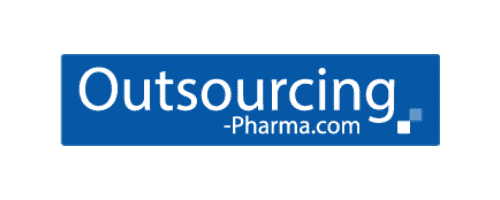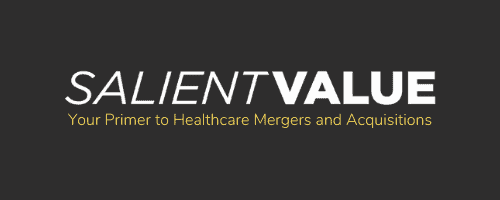
A Pharmacy Leader’s Perspective on Recent CIDRAP Recommendations
 Over the past few weeks I have had the opportunity to review and consider many of the points outlined in the recent Center for Infectious Disease Research and Policy (CIDRAP) publication titled, Ensuring a Resilient US Prescription Drug Supply and am deeply appreciative of the thoroughness and thoughtfulness this team approached the topic. Trying to make sense of drug shortages is no simple task but the CIDRAP team did an excellent job and their work will certainly be invaluable to many of the professionals outside of healthcare that are striving to better understand this pernicious and persistent issue. I would like to emphasize a few additional points for discussion, which build on the article’s key theme of transparency.
Over the past few weeks I have had the opportunity to review and consider many of the points outlined in the recent Center for Infectious Disease Research and Policy (CIDRAP) publication titled, Ensuring a Resilient US Prescription Drug Supply and am deeply appreciative of the thoroughness and thoughtfulness this team approached the topic. Trying to make sense of drug shortages is no simple task but the CIDRAP team did an excellent job and their work will certainly be invaluable to many of the professionals outside of healthcare that are striving to better understand this pernicious and persistent issue. I would like to emphasize a few additional points for discussion, which build on the article’s key theme of transparency.
A Focus on Transparency
It’s impossible to overstate how the current lack of transparency contributes to, not only many of the circumstances that spawn shortages, but also to the exacerbation of shortages that might have been potentially more manageable, or even prevented, in some cases. However, transparency isn’t as straightforward of a goal as it seems at first which is quickly revealed once you start asking the hard question: “exactly what information will be transparent to whom?” The answer is guaranteed to be different depending on who is asking or answering. The general objective of improving transparency is fairly well agreed upon across stakeholders but the exact objective of how that transparency will be defined or even who gets to decide if it is sufficiently transparent remains uncertain. As we flesh out ideas and innovations, like those mentioned in the CIDRAP article, there are some very important considerations to be made if any proposed interventions are going to be successful.
If the federal government is to create a unique entity to research, monitor, and improve the drug supply chain along the lines of what CIDRAP has suggested, these are some important considerations for that effort:
This new entity absolutely must incorporate representation of ALL stakeholders across the entire drug supply chain.
Physicians, providers, pharmacists, nurses, hospitals, and yes, even the public (our patients) need to be allowed to contribute, participate, and have influence in this effort. Too often, this issue gets characterized as purely a supply chain issue without full appreciation of the public health and human consequences in the decisions being made.
There needs to be a unified vision for what success looks like and how it will be objectively measured and quantified as well as what data will be essential for that analysis.
It’s the unfortunate reality that most of the data needed to provide the type of insight and transparency required is held tightly within a number of corporate interests, many of which are direct competitors. As another current public health crisis of opioid addiction has demonstrated, not all stakeholders can be trusted to prioritize public health over economic interests. Reconciling the conflict between the financial interests of supply chain stakeholders and our public health interests may very well prove to be the greatest challenge to overcome. If we’re not able to agree on the metrics of success, the data required to perform that analysis with integrity, will run the risk of limiting its impact from the outset. This is usually where someone offers “blockchain” as the miracle solution—I think it will likely be a part of a solution, but there are many other hurdles to overcome even with blockchain.
Upstream supply chain transparency is greatly needed, but we have significant issues with downstream supply chain transparency that need just as much attention.
The CIDRAP report focused most of its attention on the needs and issues of the upstream supply chain with limited time spent on the issues of poor transparency in the downstream supply chain. It is in this maddeningly opaque downstream supply chain world that drug shortage response teams are doing the, at times, impossibly difficult work of making sure patient care isn’t compromised. This is the end of the supply chain where the human cost is realized in both the harm incurred by the public, as well as the pharmacists and health professionals who agonize over mitigating that harm. The causes and impacts of an inadequately transparent downstream supply chain deserve to be explored in greater detail.
Information and Data Still Require Connectivity and Responsiveness for Full Collaboration
Transparency into where drug inventory is, who’s using it, how much is needed, who may be hoarding supply, and how inventory should best be equitably diverted is only part of the solution. Even with all that information and data, we lack the overall connectivity and responsiveness as a national healthcare system to collaborate so patients don’t suffer from our failures. We need to fully acknowledge that, until we start approaching our drug supply chain as a truly interconnected and interdependent system, we will not solve the issue of transparency. I still haven’t decided if the solution proposed of a unique federal entity devoted to many of these issues is the solution, but if we’re going to ever have a chance of making substantive improvements to our nation’s drug supply chain we are going to need transparency and a more aligned mindset through a common commitment to work together across the supply chain.
About the Author:
Nate Peaty PharmD, MS
As a health-system pharmacy leader, Nate has been responsible for advancing complex, inpatient pharmacy operations and support systems through innovation. His commitment to furthering the role of automation in hospital operations and passion for designing better solutions for healthcare professionals led him to co-found OrbitalRX where, as its Chief Product Officer, he currently is responsible for corporate and product strategy, research, innovation partnerships, and customer relationships. In his role at OrbitalRX, Nate is designing a new generation of pharmacy automation solutions that challenge assumptions and power a more sustainable infrastructure for health-system and drug supply chains.






 The New England Journal of Medicine reported the
The New England Journal of Medicine reported the 